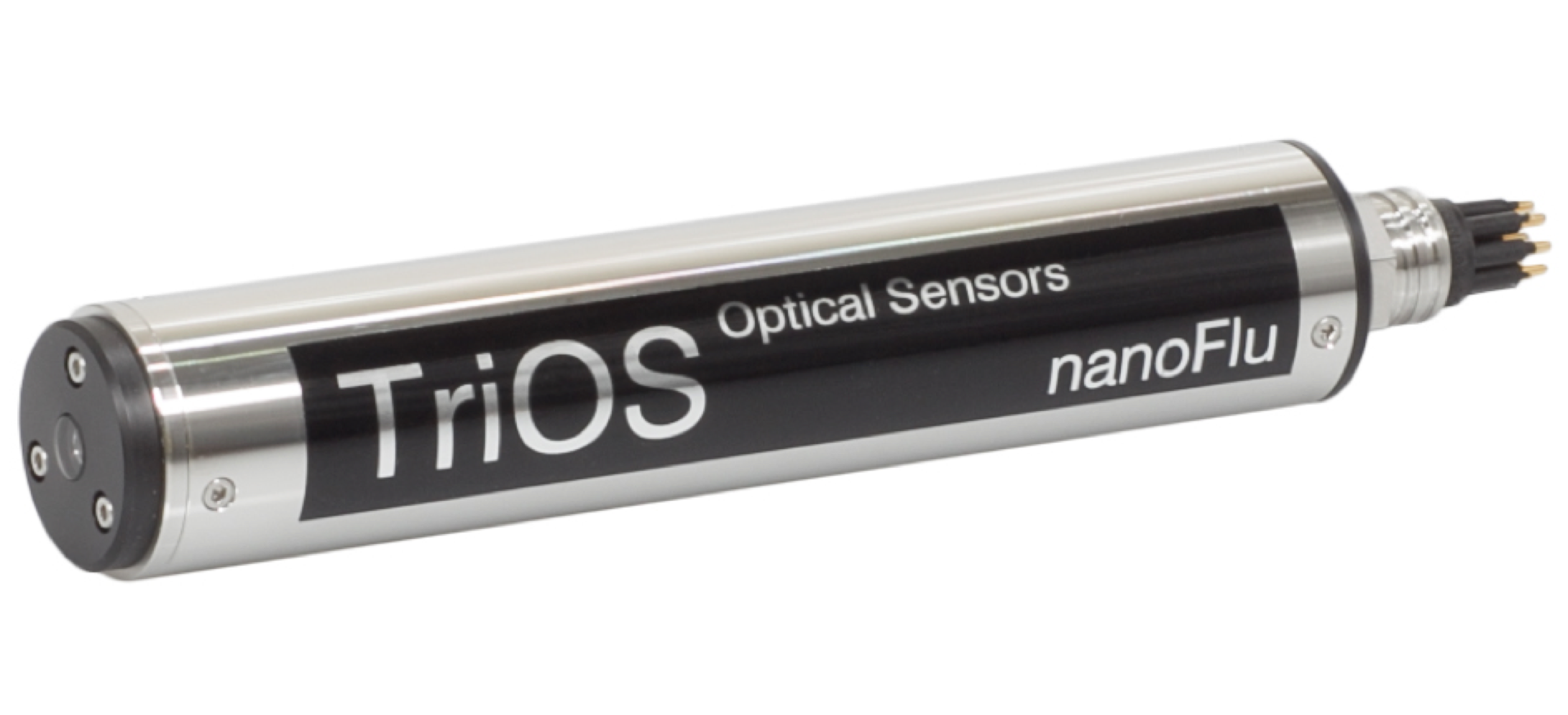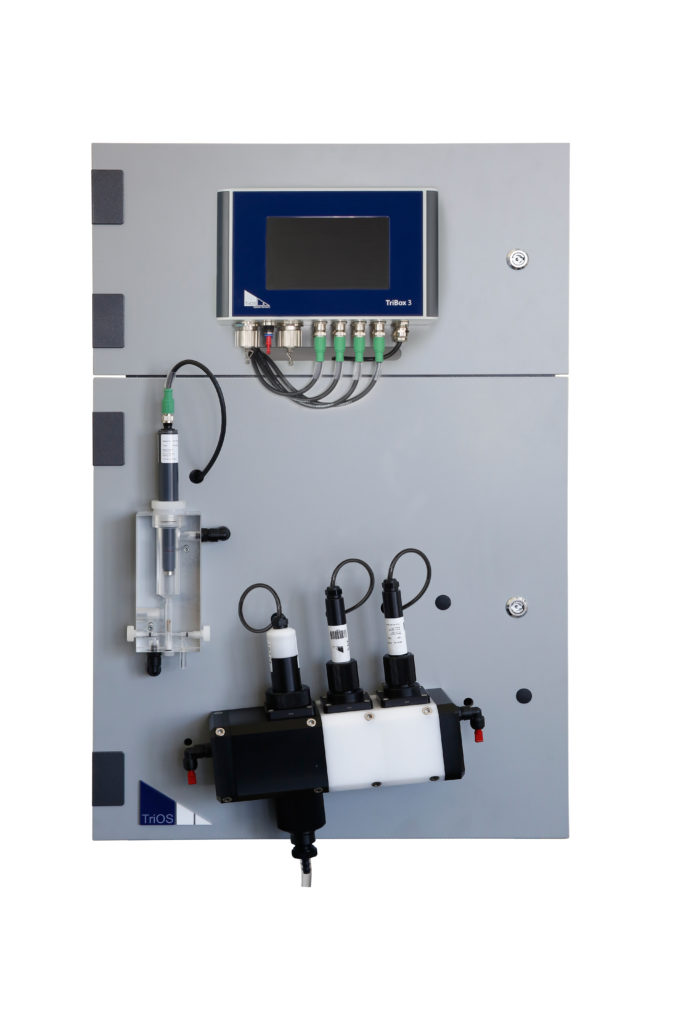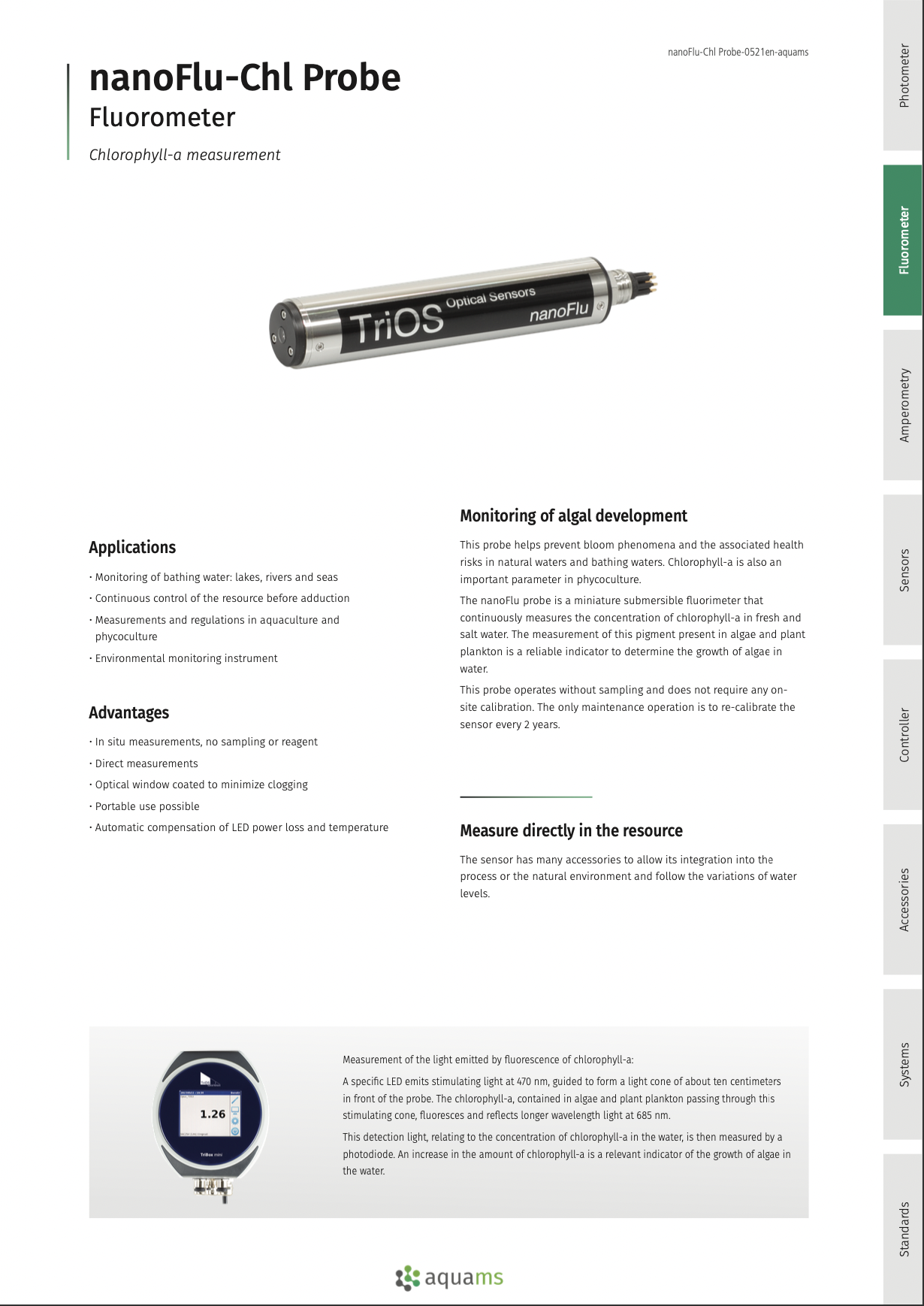nanoFlu-Chl probe (chlorophyll-a)
monitoring the proliferation of algae

Algae can be represented under various shapes, like the green, brown, red algae and micro-algae. They grow in water and more specifically in sunny environments, because they produce their energy from light thanks to photosynthesis. Algae can then proliferate suddenly and induce either health risks if they release toxins and risks for the local fauna and flora. On the other hand, algae can be used for diverse application in biotechnologies and especially for their biomass valorization and energy production.
The nanoFlu-Chl probe is a submersible miniaturized fluorimeter for the fluorescence measurement of chlorophyll-a, found in algae and cyanobacteria. The light emitted by the probe (470 nm) make fluoresce the chlorophyll flowing in front of the optical window. This visible light emitted by the fluorescence, of a higher wavelength (685 nm), is then detected and measured by a photodiode integrated in the probe.
The probe works without sampling and does not require calibration. The only maintenance operation consists in recalibrate the system once every 2 years.The sensor has many accessories to allow its integration in the process or the natural environment, to follow the variations of water levels or to automate its cleaning.
I'm interested
Measurement principle
Fluorescence :
A specific LED emits a stimulation light at 470 nm, guided to form a light cone of about ten centimeters in front of the probe. The chlorophyll-a contained in the phytoplancton pass through this fluorescent stimulation cone and return a longer wavelength light at 685 nm.
This detection light, relative to the phycocyanin concentration of the water, is then measured by a photodiode. Increasing the amount of phycocyanin is a relevant indicator of the development of cyanobacteria in water.
Applications
- Recreational water, lake and river monitoring
- Drinking water resource monitoring
- Measurements and regulations in algocutlure (phycoculture)
- Environmental monitoring instrument
Advantages
- In situ measurements, no sampling or reagents
- Instant measurement
- Optical window with coating to minimize fouling
- Portable use possible
- Automatic compensation of LED power loss and temperature
| Measurement principle | fluorescence ultra luminous Blue LED |
|---|---|
| Detector | photodiode with interferential filter |
| Parameter | chlorophyll-a |
| Measurement range | 0...200 µg/l chlorophyll-a |
| Accuracy | ± 5% |
| Auto control | automatic compensation of light source intensity variations due to wear and temperatures |
| Interference | automatic removal of ambient light |
| Response time | T100 : 6 s |
| Measurement interval | 3 s |
| Probe Body Materials | stainless steel (1.4571 / 1.4404) or titanium (3.7035) |
| Dimensions (L x Ø) | 171 mm x 36 mm |
| Weight | 0.5 kg stainless steel - 0.4 kg titanium |
| Interface | Ethernet (TCP/IP) RS-232 ou RS-485 (Modbus RTU) |
| Power supply and consumption | 12 ... 24 VDC, <1 W (<1.6 W with network) |
| Maintenance | ≦ 0.5 h / month (cleaning of the optical window) |
| Calibration interval | 24 months |
| Maximum operating pressure | - with SubConn waterproof connector: 30 bar - with fixed cable: 3 bars - in flow cell: 1 bar, 2 ... 4 L / min |
| Protection | IP68 |
| Temperature of the field or sample | +2 ... 40 °C |
| Inflow velocity | 0,1 ... 10 m/s |
Control unit

Monitoring station
Modular measurement stationsPlug-and-play installation




